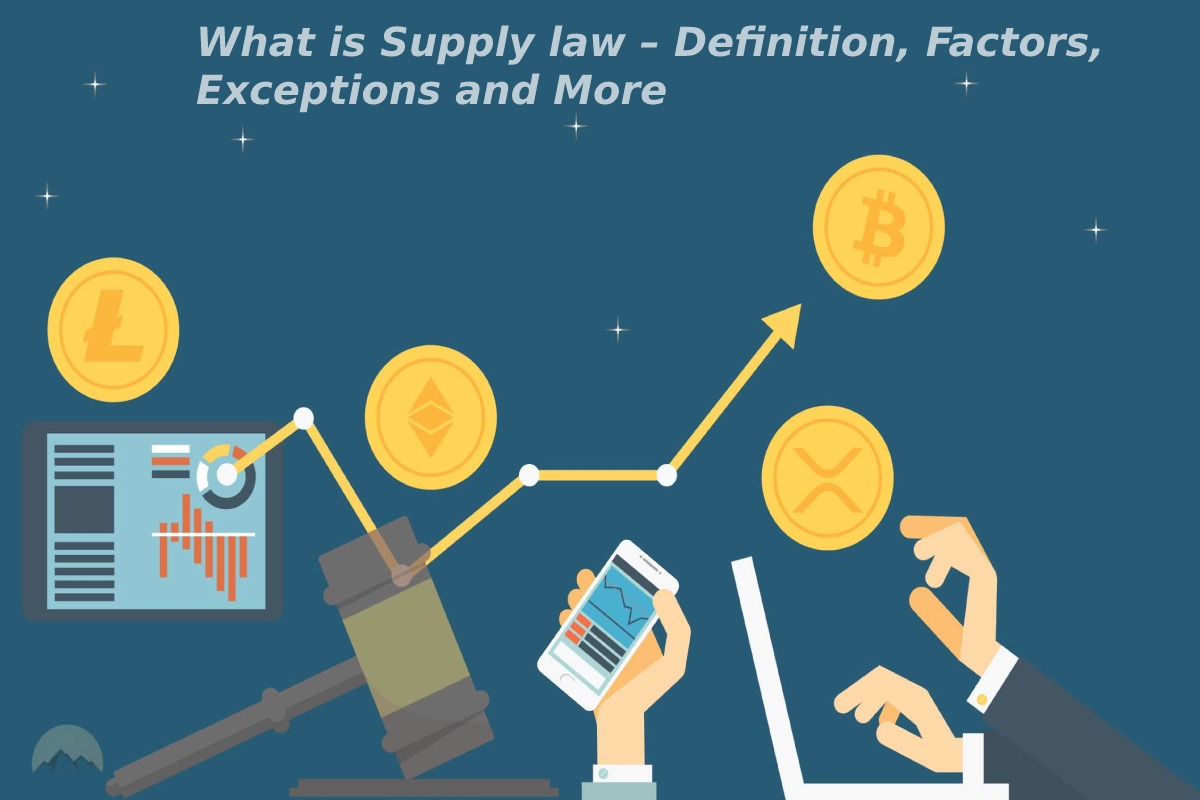Definition – Supply Law
Supply law is the amount of a product that a business or seller offers at a specific price over a specified period of time. In other words, the supply is the piece of inventory that is actually offered for sale in the market. Market supply is the quantity of a product that all businesses can offer at a specific price over a specific period of time.
the law of supply determines the quantity to be sold at a given price. But, unlike the law of demand, the supply ratio has an upward slope. It means that the higher the price, the greater the quantity offered. From the seller’s point of view, the opportunity cost of each additional unit sold by him tends to increase more and more. Manufacturers offer more at a higher price because the higher selling price justifies the higher opportunity cost for each additional unit sold.
Also Read: What is Agent Marketing – Definition, Fundamental Skills and More
Factors influencing the Supply Law
Many factors influence the supply of a product in the market, including the cost of resources. The price of the product, the state of the technology at any given time, taxes, prices of other goods, and the target. of the product. Seller is the number of companies selling the same product. among others.
Supply is highly dependent on production costs such as labor and materials; physical technologies accessible to combine inputs; the number of sellers and its total production capacity for a given period; as well as taxes, regulations or institutional costs of production.
What does the Supply Law State?
The law of supply expresses the relationship between the supply and the price of a product. It establishes a direct relationship between the price of a product and its supply if the other factors remain untouched. If a price of a product increases, sellers will choose to increase the production of the product to process orders more to obtain high profits, which will automatically lead to an increase in supply. Likewise, if the price of a product declines, suppliers reduce the supply of the product in the market. Because they expect the price of the product to increase in the future. It indicates the direction of the variation of the quantity delivered and does not indicate the amount of the variation.
What are the Exceptions to the Supply Law?
There are a few exceptions to the law of supply theory. The law will not apply if further price changes are expecting in the future. If sellers expect prices to fall more in the future, they will be willing to sell more, even at lower prices. In the case of perishable products such as milk, vegetables, fish, eggs, etc., their price does not affect the supply. Sellers cannot store these items for a long time. Even in the case of agricultural products, the supply is more dependent on natural factors such as droughts, floods, natural disasters, etc.
Why is the Supply Law so Important?
The law of supply is important because it helps investors, entrepreneurs and economists to appreciate and predict market conditions. For example, a business launching a new product may try to increase the price of its product by increasing consumer demand through advertising.
At the same time, they may attempt to further increase their price by voluntarily limiting the number of units sold in order to reduce the supply. In this scenario, supply will be minimizing and demand maximize, resulting in a higher price. Supply law
In other words, an offer is an item of inventory that is actually put up for sale for sale. Market supply is the quantity of a product that businesses can offer at a specific price over a specific period of time.
the law of supply determines the quantity to be sold at a given price. But, unlike the law of demand, the supply ratio has an upward slope. This means the higher the price, the greater the quantity offered. From the seller’s point of view, the opportunity cost of each additional unit sold by him tends to increase more and more. Manufacturers offer more at a higher price because the higher selling price justifies the higher opportunity cost for each additional unit sold.
Also Read: What is Financial Modelling – Definition, Uses, Elements and More












